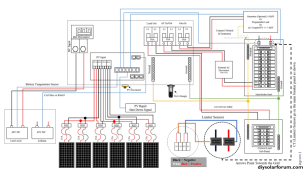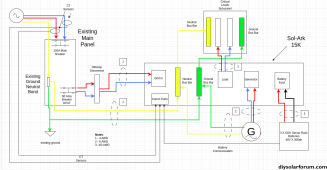chuckyboy81070
New Member
Hi everyone,
I'm still researching stuff. This forum has been very helpful.
The spec sheet for the Sol-Ark 12k states 15120W 63A L-L (240V) for the Max Continuous AC On-Grid (or generator) and a Surge AC Power (10 Seconds) of 16,000VA L-L (240V).
Forgive the beginner question, but does that mean that even while the grid is connected and functional, that any draw above that value could potentially overload the inverter?
Our house here in Texas has a 5-ton ac unit (soft-start), electric oven, and induction stovetop. The dryer is gas. While the grid was on and I were to be cooking a multi-burner dinner on the stovetop while baking a turkey and the air conditioner running (a pretty common combo during the summer), am I rolling the dice if you take into account the additional power draw coming from the rest of the house that could itself be 2 or 3 kW?
Only the 120v stuff would be on the critical load subpanel, if that matters.
I'm still researching stuff. This forum has been very helpful.
The spec sheet for the Sol-Ark 12k states 15120W 63A L-L (240V) for the Max Continuous AC On-Grid (or generator) and a Surge AC Power (10 Seconds) of 16,000VA L-L (240V).
Forgive the beginner question, but does that mean that even while the grid is connected and functional, that any draw above that value could potentially overload the inverter?
Our house here in Texas has a 5-ton ac unit (soft-start), electric oven, and induction stovetop. The dryer is gas. While the grid was on and I were to be cooking a multi-burner dinner on the stovetop while baking a turkey and the air conditioner running (a pretty common combo during the summer), am I rolling the dice if you take into account the additional power draw coming from the rest of the house that could itself be 2 or 3 kW?
Only the 120v stuff would be on the critical load subpanel, if that matters.






